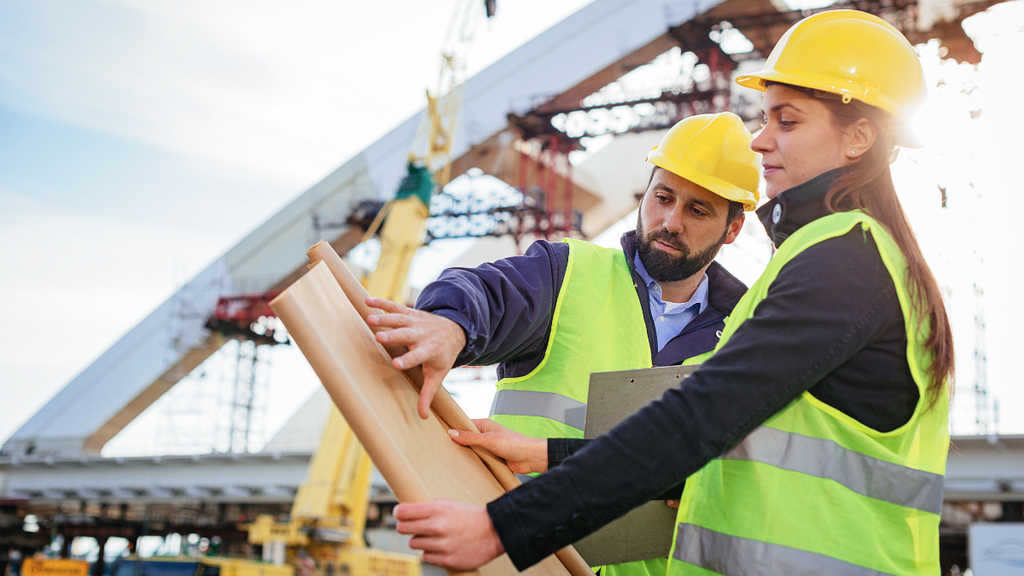The Facts About Geotheta Revealed
The Facts About Geotheta Revealed
Blog Article
The Basic Principles Of Geotheta
Table of ContentsGet This Report about GeothetaLittle Known Facts About Geotheta.Geotheta for DummiesWhat Does Geotheta Do?Getting My Geotheta To Work

They conduct site investigations, collect samples, execute research laboratory examinations, and examine data to evaluate the viability of the ground for construction jobs - Engineer of Record. Based upon their searchings for, geotechnical engineers provide recommendations for foundation layout, slope security, maintaining frameworks, and mitigation of geotechnical hazards. They collaborate with various other professionals, such as designers, architectural engineers, and building groups, to make certain that geotechnical factors to consider are incorporated right into the overall task style and implementation
By examining the actions and homes of soil and rock, they can determine potential geotechnical threats such as landslides, soil negotiation, or slope instability. Their expertise assists avoid failures or mishaps that can threaten lives and residential or commercial property. Below are some thorough responsibilities and responsibilities of a geotechnical designer: Website Investigation: Geotechnical designers conduct website examinations to gather information on subsurface conditions.
They analyze the data to understand the residential or commercial properties and actions of the soil and rock, including their stamina, leaks in the structure, compaction attributes, and groundwater conditions. Geotechnical Analysis and Layout: Geotechnical engineers assess the information accumulated during website investigations to assess the security and suitability of the site for building and construction tasks. They perform geotechnical estimations and modeling to assess factors such as bearing capacity, settlement, incline stability, side planet pressures, and groundwater flow.
The 8-Second Trick For Geotheta
Foundation Style: Geotechnical engineers play a vital role in creating foundations that can securely sustain the desired structure. They analyze the dirt conditions and load demands to determine the ideal structure kind, such as shallow structures (e.g., grounds), deep foundations (e.g (https://moz.com/community/q/user/geotheta?_gl=1*xkyvtd*_up*MQ..*_ga*NjU0Mjk2NzIxLjE3MjI2MDU1Nzc.*_ga_DS7K9Q3S5W*MTcyMjYwNTU3Ni4xLjAuMTcyMjYwNTU3Ni4wLjAuMA..)., stacks), or specialized methods like dirt improvement. They consider aspects such as negotiation limits, birthing capability, and soil-structure communication to develop ideal structure styles
They evaluate building and construction plans, monitor website activities, and perform field inspections to verify that the style referrals are adhered to. If unforeseen geotechnical concerns occur, they assess the situation and provide referrals for removal or modifications to the design. Danger Evaluation and Mitigation: Geotechnical designers evaluate geotechnical risks and threats related to the task site, such as landslides, liquefaction, or dirt erosion.

Cooperation and Communication: Geotechnical engineers function closely with other specialists associated with a task, such as engineers, architectural designers, and building and construction groups. Effective communication and partnership are important to incorporate geotechnical factors to consider right into the general job style and building and construction process. Geotechnical designers offer technical expertise, answer queries, and make sure that geotechnical requirements are met.
Our Geotheta Statements
Here are some kinds of geotechnical engineers: Foundation Engineer: Structure designers specialize in making and assessing structures for structures. They evaluate the soil problems, lots needs, and website features to identify the most proper foundation type and layout, such as superficial foundations, deep structures, or specialized methods like pile structures.
They review the elements influencing incline stability, such as soil residential or commercial properties, groundwater conditions, and incline geometry, and create approaches to avoid incline failures and mitigate risks. Earthquake Designer: Earthquake engineers concentrate on evaluating and designing frameworks to hold up against seismic forces. They evaluate the seismic danger of a website, assess dirt liquefaction potential, and establish seismic style criteria to make sure the safety and strength of structures during earthquakes.
They perform area testing, collect examples, and assess the accumulated information to define the dirt buildings, geologic formations, and groundwater conditions at a site. Geotechnical Instrumentation Designer: Geotechnical instrumentation designers concentrate on monitoring and measuring the behavior of soil, rock, and structures. They mount and maintain instrumentation systems that check aspects such as soil settlement, groundwater levels, slope motions, and structural displacements to evaluate efficiency and give early cautions of prospective issues.
The Of Geotheta
They conduct examinations such as triaxial tests, loan consolidation tests, straight shear tests, and leaks in the structure tests to gather information for geotechnical evaluation and style. Geosynthetics Designer: Geosynthetics designers specialize in the layout and application of geosynthetic products, such as geotextiles, geogrids, and geomembranes. They use these products to moved here boost soil security, enhance slopes, supply drain options, and control erosion.
They often tend to be investigatory people, which means they're intellectual, introspective, and analytical. They are curious, systematic, sensible, analytical, and sensible. Several of them are additionally social, implying they're kind, charitable, participating, individual, caring, handy, understanding, tactful, and pleasant. Does this sound like you? Take our cost-free occupation examination to learn if geotechnical engineer is among your top occupation suits.
In the office environment, geotechnical designers utilize specialized software program tools to do calculations, produce designs, and evaluate data. They prepare reports, review job specifications, connect with customers and employee, and coordinate task activities. The office setup provides a favorable atmosphere for study, analysis, and partnership with other experts involved in the task.
5 Easy Facts About Geotheta Described
They regularly go to job sites to perform website investigations, examine geotechnical conditions, and gather information for analysis. These check outs involve taking a trip to various areas, in some cases in remote or challenging terrains. Geotechnical designers may perform dirt sampling, conduct tests, and display building and construction tasks to guarantee that the geotechnical elements of the task are being applied appropriately.
Geotechnical designers additionally work in specialized geotechnical research laboratories. Geotechnical lab engineers work thoroughly in these settings, dealing with testing equipment, operating instruments, and tape-recording information.
Report this page